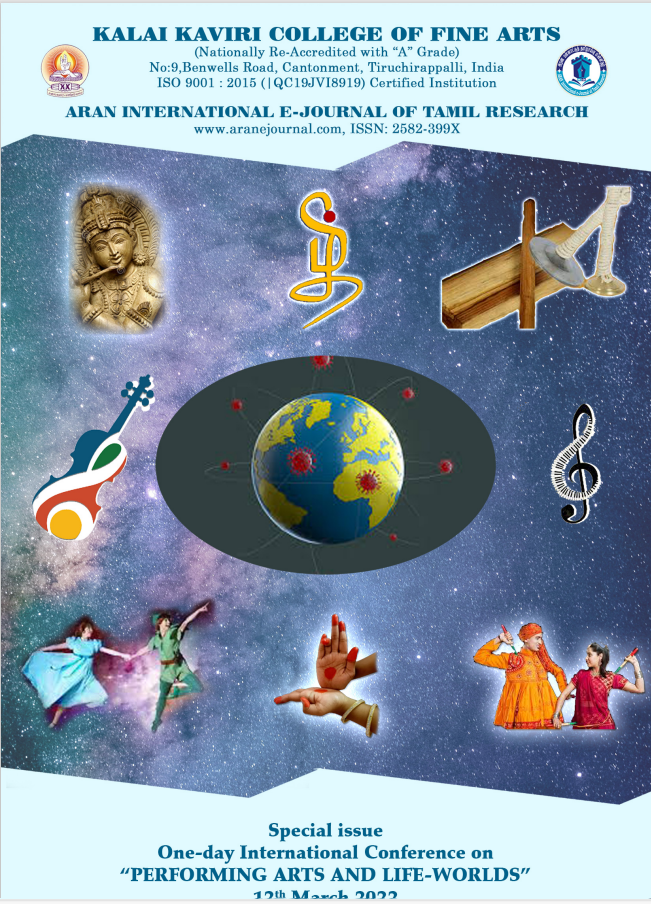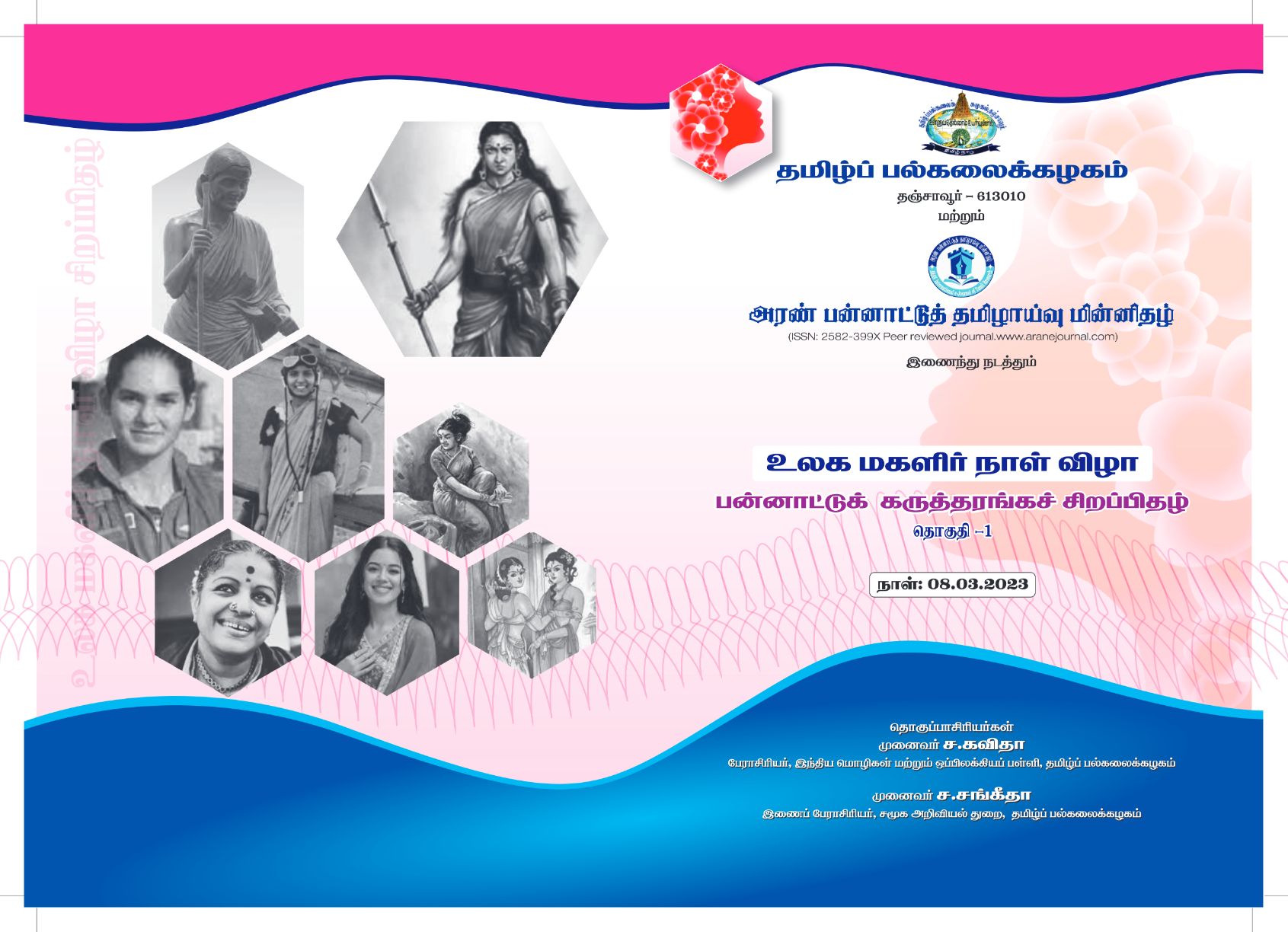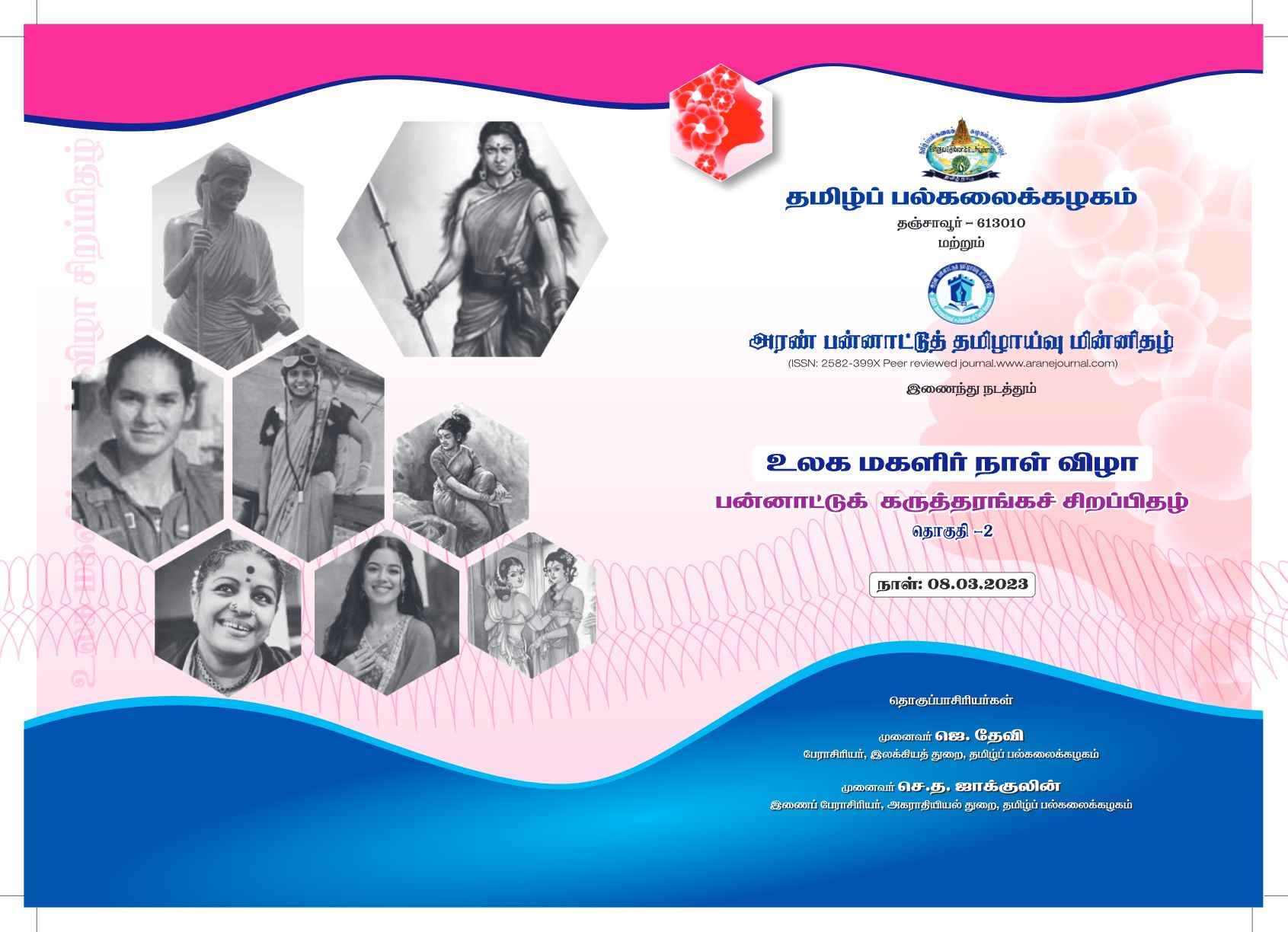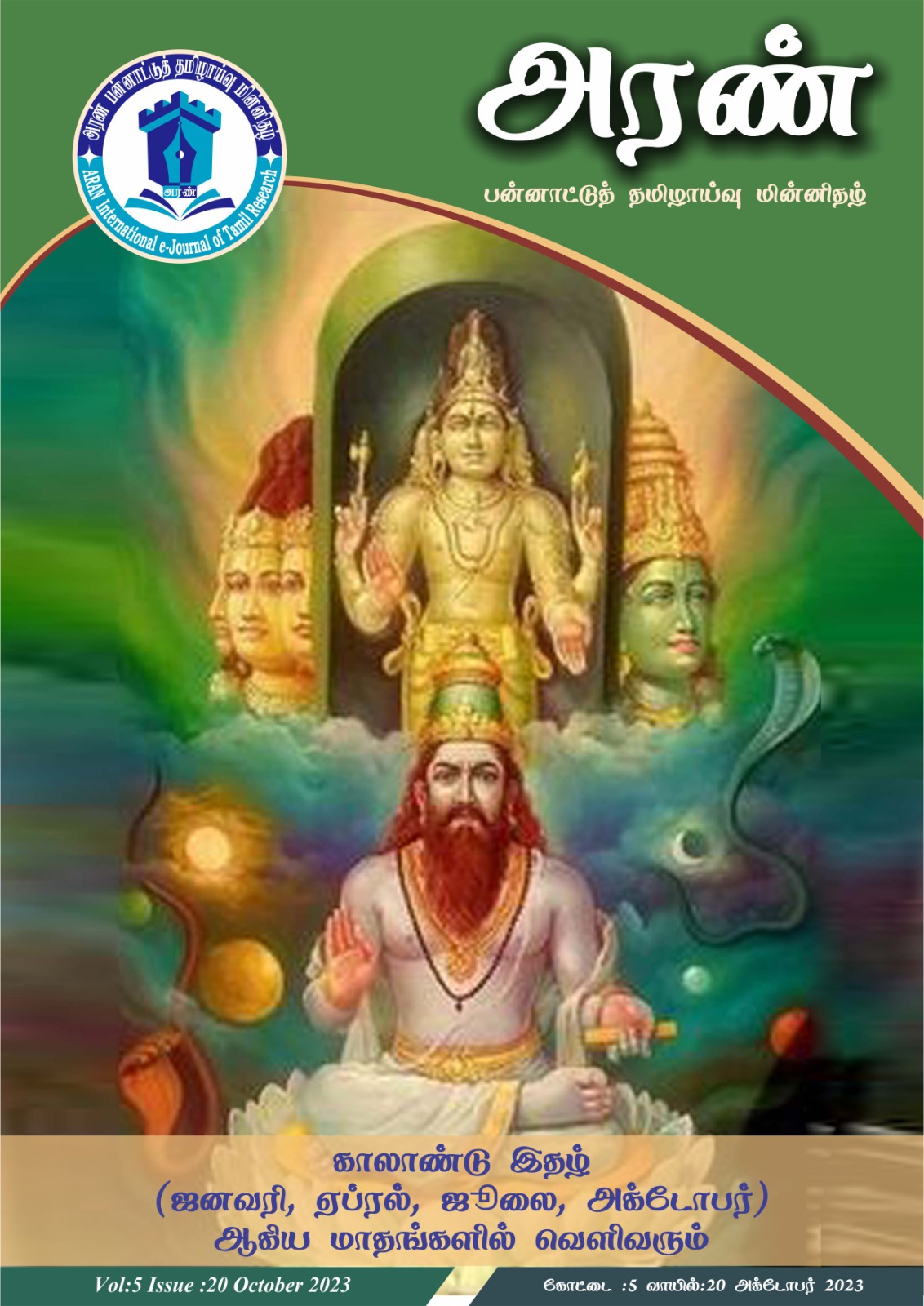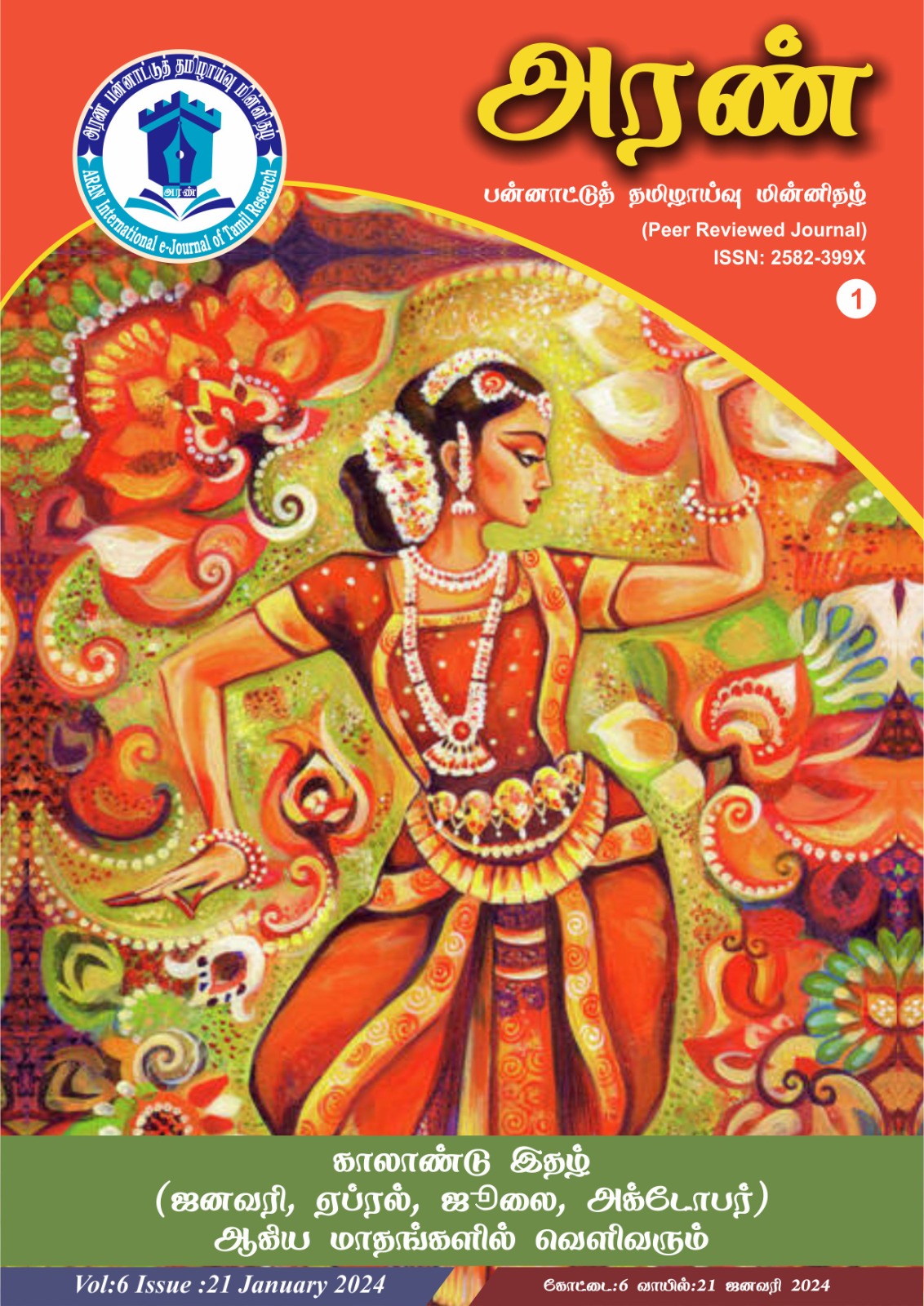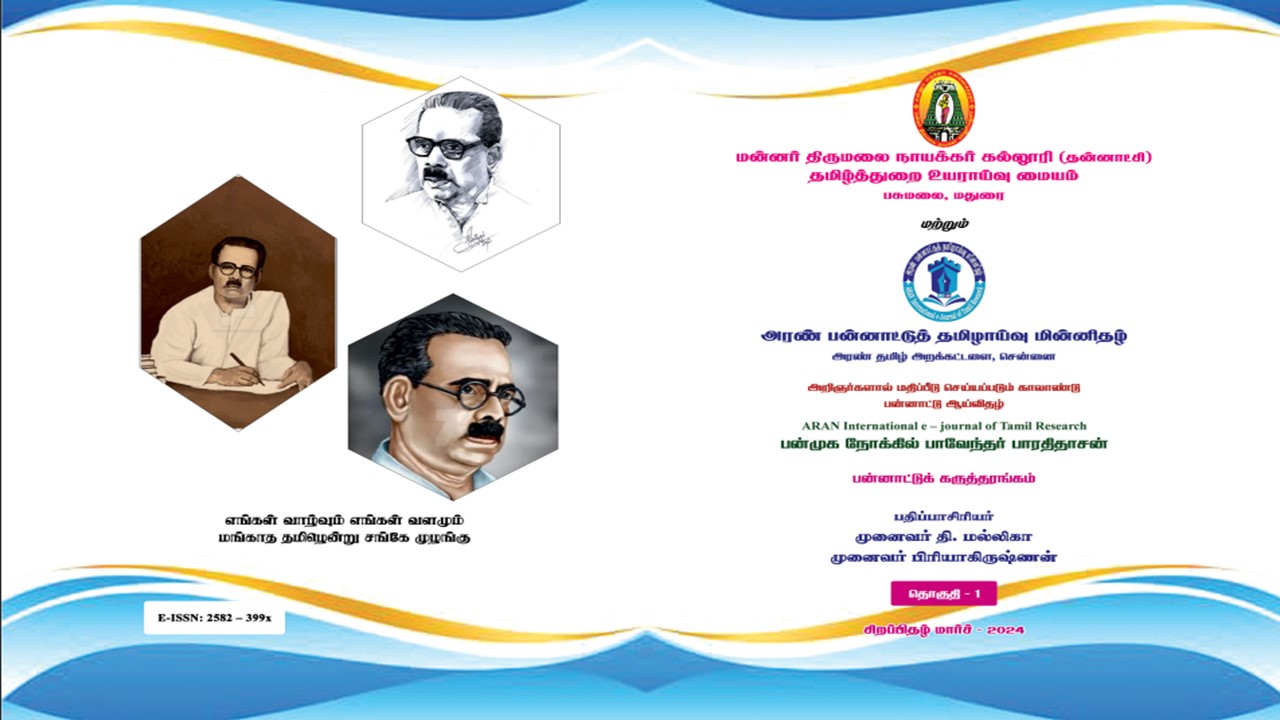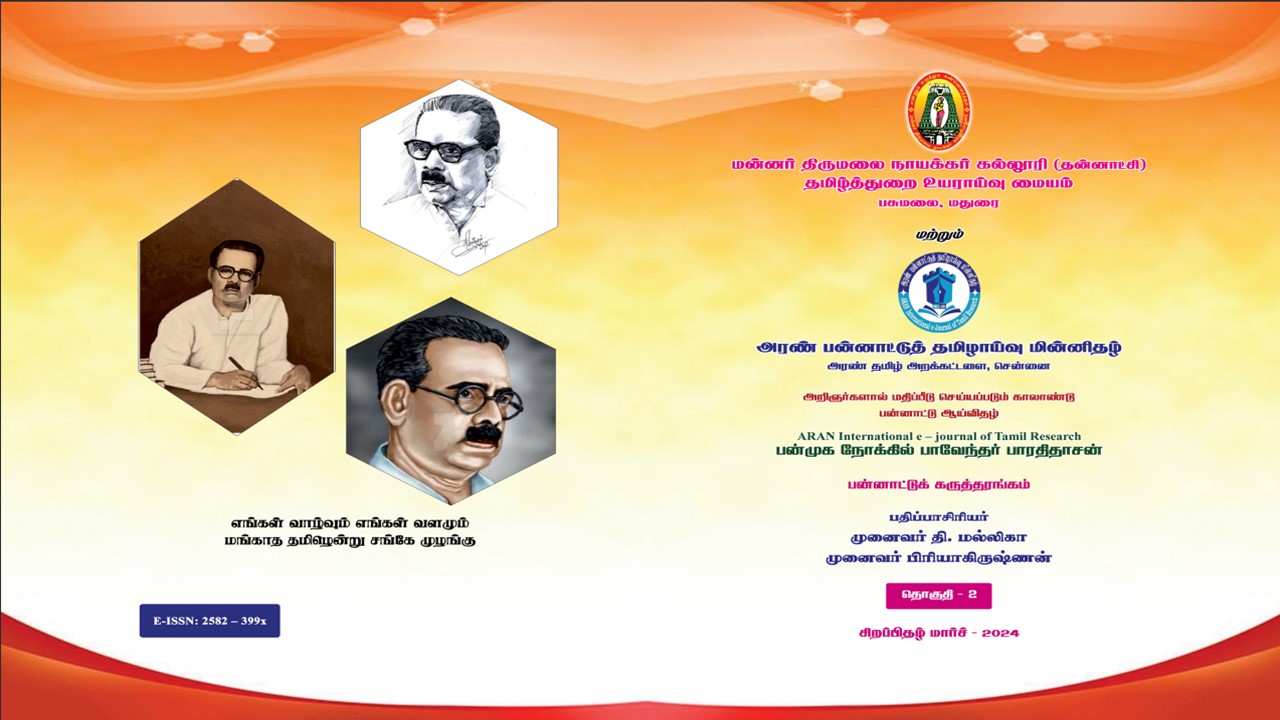THE GREAT EXHIBITION OF THE INDUSTRY AND ART OF ALL NATIONS (LONDON, 1851)
Dr.S.Purushothaman Assistant Professor, Department of History, Saraswathy College of Arts and Science, Olakkur, Tindivanam, Tamilnadu, India.
Abstract
The Indian Arts and Handicrafts had attained its highest position on the eve of the arrival of the British in the Madras Presidency. In the 18th century, the Europeans looked upon India as a source of high profits through their trade. Initially the English East India Company did not alter the ways or the organization of the indigenous industries in India. On the eve of the Colonial Rule quantitatively new forms seems to have emerged in the economic structure of handicrafts, agriculture and trade. This led to the rapid decline in the indigenous industries in India as a whole. Due to the many hardships and sufferings, which were faced by the artisans and craftsmen, the cottage industries began to decline during the period.
Keywords :
Madras Presidency – Exhibition – Handicrafts – Agriculture – East India Company - Industrialization
Introduction
The Indian Arts and Handicrafts had attained its highest position on the eve of the arrival of the British in the Madras Presidency. In the 18th century, the Europeans looked upon India as a source of high profits through their trade. Initially the English East India Company did not alter the ways or the organization of the indigenous industries in India. On the eve of the Colonial Rule quantitatively new forms seems to have emerged in the economic structure of handicrafts, agriculture and trade. This led to the rapid decline in the indigenous industries in India as a whole. Due to the many hardships and sufferings, which were faced by the artisans and craftsmen, the cottage industries began to decline during the period.
The great exhibition of 1851
“The Great exhibition of the Industry and Art of All Nations” which was held in London in 1851 was one of the turning points in the history of the art and handicrafts of the world.
Many groups of influential designers and art critics of Britain had mooted the idea of conducting a great exhibition. The British in the early years of the 19th century had appreciated and encouraged the indigenous arts of India. But when trade established with political supremacy the attitude of the British had been changed. The civilians lived in India in British style had looked constantly to London for ratification of their tastes. But when they faced some difficulties in getting goods from London, the British were forced to patronize the business in the larger towns in India. They also had to turn up to Indian craftsmen for their needs.
Some of the larger enterprises like P.O.R.R & Sons in Madras had engaged local craftsmen in making western style of jewellery. These works won admiration and appreciation for its unique craftsmanship made by the local craftsmen. As the demand for the craft works of Madras had increased, the crafts in local markets became a significant part of the local production The British began to purchase the locally made craft works such as jewellery and they were fascinated by the excellence of the skilled work of the craftsmen of the Madras Presidency.1
The exhibitions of Industrial arts and crafts were very common in those days in European countries. They used to display the spoils of war or secular or saved treasurers in public places where the objects were put for sale. Thus, these kinds of exhibitions have a complex function both utilitarian and cultural aspects. Many such exhibitions had its origin even before the 16th century. In the early Tamilaham, in the city of Poompuhar, the paintings and art objects were exhibited in the fairs and popular markets.
Thus, after industrialisation, many modern exhibitions were held in European countries. All these essentials of modern exhibitions were combined together in a way as ‘Great Exhibition.2 The exhibition was announced under the direct charges of Prince Albert of England. The decision to conduct such an exhibition in London was taken by the Queen’s Commissioners within the short period of time and they decided to conduct such a vast organisation. Sir Joseph Paxon, the builder of the Green House and a gardener to the Duke of Devonshire, made the plan for the “Great Exhibition”. The Queen of England had granted a site on the south side of the Hyde Park which lies between Kensington Drive and the Potter Row and this Palace covered a space from 16 to 20 acres or almost one million square feet. The crystal palace was erected on this site.
The exhibition was announced to all the state Governments in India and a meeting was held at Madras in the Polytechnic InstitutionsRoom on the 1st April 1850. The members of the Government such as W.C. Arbuthnot, Major Balfour, G.L.Preadergast, Captain Worster, Major Smith, J.Thomson, J.B. Norton, Dr.Hunter and C.V. Cunniah Chetty attended this meeting.3
In Madras, William Urquhart Arbuthnot, the Esq.. has been appointed as the President and Assistant - Superintendent Edward Balfour was appointed as the Honorary Secretary of the MCC.4 The building for the Great Exhibition was designed and made in small-pre-fabricated parts that were easy to transport and put it in one place. The building was 1851 feet long and 108 feet high and was much larger. On the day of its inauguration it had accommodated more than 2,50,000 visitors.
Letters were soon dispatched to all the Presidents of the local committees. In a letter to the collector of Chinglepet on the subject of the exhibition it was stated that, “the co-operation from all the collectors were solicited and thereby they were requested to seek the co-operation of the merchants and landholders in their respective places.” The district collectors were also requested to prepare a list of articles from their areas that could be sent to the exhibition. By a strict adherence to their rules and after careful study the list of articles were prepared by all the local committees and they were forwarded by the MCC from the Fort. St. George, Madras.5
The local committee for Trichnopoly and Salem in Madras had sent the articles such as:
Table No.1
S.No. The Craft items R. A. P.
1 Pith Model of the unfinished Roya Gopuram
or entrance to the Pagoda at Srirangam 50 0 0
2. 1 No. of Nagasorum Pagodat at Coimbatore 17 8 0
3. Kinobi, apiece measuring 5 yards 160 0 0
3a. a. Silk — Rug 6 feet 3 inches by 4 feet 14 0 0
4. 1 Dagger — native Silver handled 45 0 0
5. 1 Gold Rose chain - 2 yards 180 0 0
6. 2 dozens of painting 10 0 0
7. 4 dozens of painting 10 0 0
Total 386 8 0
Likewise all the local committees, had sent their list of articles with price in their communication letter to the MCC. The proceedings of this exhibition shows a list of exports from Madras including various animal products ad manufactures and among these the craft articles which were sent in 1848-49 were as follows.6
Exports from Madras Central Committee:-
Table No.2
Name of Articles Places of Production Name of the Presidency
1. Muslims Arnee, Vellore, Madras Presidency
2. Punjum cloth Nellore, Coringa, Arcot Madras Presidency
3. Bale cloth Vizagapattinam, Nellore Madras Presidency
4. Carpets Ellore, Bangalore, Masulipattinam Madras Presidency
5. Chintzes of varieties Arcot Madras Presidency
6. Hand kerchiefs Erode, Pulicat, Saidpet Madras Presidency
Many such raw materials, fished articles, clothes, artifacts including jewellery and precious stones were sent from all places. India as an influential participant sent many articles from all over the parts of its territory. The first international exhibition of its kind, it was to set the style for other exhibitions for many decades. “The exhibition of the works of Industry of all Nations in 1851.was barely opened to public attention which was directed to the gorgeous contributions of India. Amid the general disorder everywhere apparent in the application of Art to manufactures, the presence of so much unity of design, so much skill and judgement in its application, with so much of elegance and refinement in the execution... excited a degree of attention from artists, manufacturers and the public, which had not been, without its fruits”.7
After the great success of the great exhibition of 1851 many subsequent international exhibitions were conducted in all the other European countries. They had exposed the artistic and the craftsmanship of the South Indian artisans and craftsmen. In India many important national exhibitions were also held in the same period.8
Historical and Cultural Impact of the Great Exhibition of 1851
“The London exhibition of 185lhad stimulated among the Europeans a liking for the traditional artistic handicrafts of India as a whole. The great exhibition was one of the most important international fairs and exhibitions of it unique kind. When India was occupied under the imperialistic economic attitude of the British, there was a great danger and alarming warning for the decay and decline of the indigenous cottage industries in’ India. In such critical phase of the colonialism, the great exhibition displayed the historical artifacts from the collection of the Princes and magnates and also from the other southern contemporary states. Thus the impact of this exhibition was a great contribution of India’s arts and handicrafts.9
Consequently the results were:
1. The British people in England came to aware of the artistic and handcrafted excellence of the people of the Madras Presidency and India.
2. Secondly, already there was a great debate regarding the India’s craft tradition in all the European countries. These exhibitions thus cleared the question about the rich variety of Indian artistic and handcrafted tradition.
3. Thirdly the high quality as well the chaste design and the ornamentation of the Indian handicrafts had won accolades from the pro-Indian critics of that period.
4. Fourthly, the display of Indian had enabled the growth and development of the arts and handicrafts of the Madras Presidency by creating the new avenues of exposition of their skills in further future exhibitions.
5. It had recognized the arts and handicrafts of the Madras Presidency for the entry into the new markets. For example the rugs from Ellore in Godavari district were universely admired in Britain. Though the Muslin of Arni were not parallel to that superiority of the Dacca Muslins, the Muslins of Arni had won the admirations of the people of Great Britain.10
6. The artefacts and the rare artistic pieces of Madras Presidency were collected and they had been displayed in Museums and libraries in England as well as in other countries.
7. The excellent artistic and handcrafted goods had created a new demand. The filigree necklace from Calicut which was displayed in London in 1851 was considered to be the most important example of the modern jewellery skills and patterns.’ They had been considered as the examples for the sophisticated people in Europe. The Indian carpets and their quality of dyeing were also admired. Rajah ‘Marthanda Varma of the Malabar sent an ivory throne, which was elaborately carved and set with jewels. It was admired as thoroughly Indian in design and worthy of the purpose for which it was intended. In modern days it has been exhibited in the apartments of Windser Castle in England.11
8. Following the western people, the richer classes in India in Madras too were fascinated and were thrilled because of the sudden fondness, taste and attraction for their local handicrafts in Britain. Thus this led to the revival of indigenous industries.
9 From the year 1851 onwards Henny Cole, Owne Jones, William Mornis, George Birdwood and many other Indian art lovers of Britain had turned out as the defenders of Indian manufactures. They also accused the British empire of presiding over this destruction. Thus the British Government was accused for the declining nature of the Indian arts and handicrafts.
10. At the end of the exhibition of 1851, a new exhibition Journal was published, It was an illustrative and informative documentary ad more an interesting one. The proceedings at the Juries were also published and thus the catalogue of the Great Exhibition of 1851 was a precious document in the history of Industrial development.
After the great success of the Great Exhibition of 1851, the French Government also conducted one first French Exhibition in 1855. It was during this period a new concept of the ‘Exhibition village’ was created: In 1889 when the French World Fair was conducted, the Eiffel Tower was constructed in order to celebrate the centenary of the historic year of the French Revolution of 1789. Likewise after 100 years England celebrated the centenary of the Crystal Palace in 1951 at Kensington and an ‘Exhibition Village’ with all aspects was set up n England. From that time onwards, many exhibitions were held throughout European countries that were dedicated to modern decorative Art.12
Conclusion
The Great Exhibition of 1851 which had exposed the greatness and solidarity of the native handicrafts of the Madras Presidency can be compared with that of the early. Tamilaham’s exports of handicrafts objects to Rome as well as to the other European countries by which Tamilaham was very famous for its artefacts in the Greek and Roman countries. The exposition of the traditional handicrafts also made India popular among the European countries from such an early period onwards.13
REFERENCES
1. Rosemary Crill, et.al, Arts of India, (1550-1990), Ahmedabad,
1990, p.225.
2. Ibid. p.284.
3. Proceedings of the Madras Central Committee for the
Exhibition of the Industry and Art of all Nations, Held in
London in 1851, Madras, 1853, p.4.
4 Encyclopaedia of World Art, Vol.V, tata McGraw Hill Book
Company, INC, London, 1958, pp.282-284.
5. Proceedings of the MCC for the Great Exhibition of 1851,
op.cit., p.54.
6. Proceedings of the MCC for the Great Exhibition of 1851,
op.cit., p.63
7. Rose Mary Crill (et al.) op.cit., p.223.
8. Many international exhibitions were conducted, from that
time onwards viz., in Dublin (1853), Paris (1855). London
(1866) Paris (1878), Melboure (1880). London (1886), Glasgow
(1888) and Paris (1889 and 1990). In India many exhibitions
were held in Madras (1859).
9. Rose Mary Crill (et al.,), op.cit., pp-223-225.
10. B.S. Baliga, Compendium on History of Handloom Industry
in Madras, , Madras, 1960, pp.1-10.
11. Public Consolidation, 1852.
12. Encyclopedia of World Art, Vol.V, op.cit., p.286.
13. Madras Musings, January 16th - 31st, 2012.p.8.

